I’d hoped to blog from Paris, but it didn’t work out – the WiFi at my hotel spent most of the week failing to connect and really I was just too busy to post anyway. Apart from the last 36 hours or so when I was considerably indisposed following a rather violent disagreement between a curry and my stomach which left me living on sips of water alone, spoiling my plans for a couple of really good meals with a decent amount of alcohol before my journey on Eurostar back to England I had a pretty good time there.
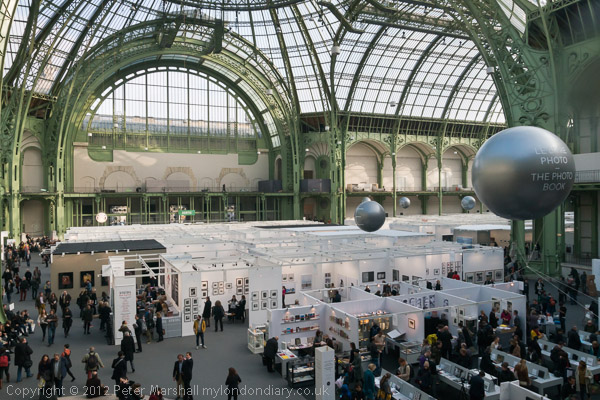
Plenty of space in the hall – mid-afternoon during the first public day
I have to say Paris Photo itself was perhaps a little of a disappointment, even though I had no great expectations. It’s certainly still somewhere where you can see an enormous amount of great photography from the past, including work by most of the real innovators and masters of the medium, but perhaps more than ever this year it showed its bias. It’s an obvious one, in that this is largely a dealer show, and dealers can only show the work that is available for sale. So, for example, a photographer like Atget was almost invisible at Paris Photo, despite his fairly huge output of work, as the great majority of his pictures were either sold by him direct to museums or became a part of museum collections – such as those bought after his death by Berenice Abbott. Other photographers, working before photography dealers and galleries really existed, seldom made more that a half dozen or so copies of any prints, and often their negatives have not survived for later prints to be made, or their estates have not allowed this to be done.
What dominated some of the stalls was work from many relatively minor figures from the post-war years who are still alive (or whose negatives are still available) being promoted because their work is available, whereas relatively little by photographers of much greater interest is still around outside of museum and other collections.
Contemporary work suffers – perhaps as always – from the quest for novelty by both photographers and in particular contemporary galleries. All too often this seems to be a turning against the peculiar link with reality which to me is at the root of interest in our medium. After a few minutes walking around the great hall containing the photo fair I never wanted again to see work in which people had painted on their photographs, punched holes in them, cut them up, processed them deliberately badly and so on. I’ve never thought showing contempt for the photograph a likely way to produce worthwhile results, but there were rather too many photographers and galleries at Paris Photo who seem to think so.
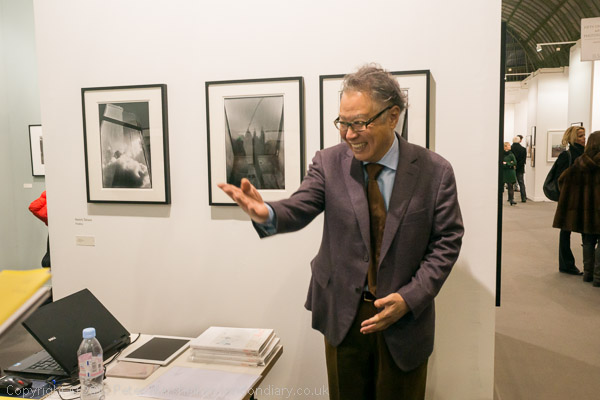
There was a lot of good work by Japanese photographers on show – and some of the photographers were there
Despite the 37 new galleries and 91 that had been in previous editions, there did seem to be a dearth of exciting or even interesting new work on show. There was also a surprising lack of work by UK photographers from after the Victorian period, and several of the more interesting London galleries were not here – there were only 8 from London (including one I’d never heard of, and seeing the work they had brought I wasn’t surprised.) I met a friend from one of those missing and was told that their application to show this year had been refused. I was more than surprised given the poor quality of work on some of those who had been given space, and the large spaces allocated to some galleries with apparently fairly limited work to show.
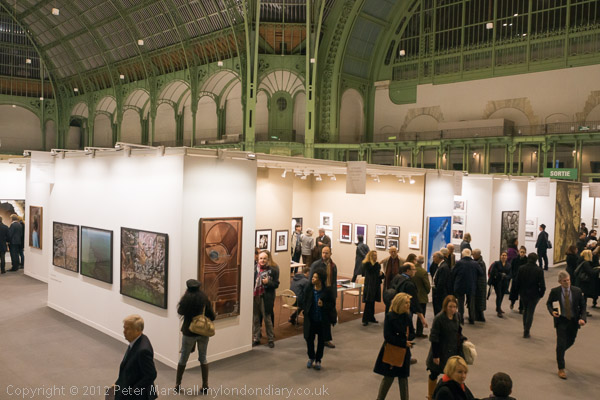
Even during the opening the hall didn’t seem at all crowded
Of course there were highlights for me – some of which I’ll mention in later posts and it was still worth attending, though certainly I’d not go to Paris for Paris Photo alone. If you have any interest in photography Paris in November is a pretty magic place, with around 80 exhibitions in the Mois de la Photo, another 100 or so in the fringe festival, the Photo Off, over 50 in the Saint-Germain-des-Pres Photo Festival, and what seemed to be countless other shows outside of these events, as well as shows of work for the Prix Pictet, the Prix de Photographie Marc Ladreit de Lacharrière – Académie des beaux–arts, the Prix Arcimboldo for creation of digital images, the Prix Carmignac Gestion for photojournalism. In six days there, most of which were spent going from show to show, I hardly scratched the surface, although apart from Paris Photo I attended seven openings, went to presentations on seven other shows, went to the Nofound Photo Fair, went into and walked around about 50 exhibitions and probably looked at almost as many through the windows and either decided it wasn’t worth wasting my time, or was unable to go in as they were closed. But there were quite a few areas of Paris I didn’t manage to get to, concentrating my time on the shows I particularly wanted to see and others in the same areas.
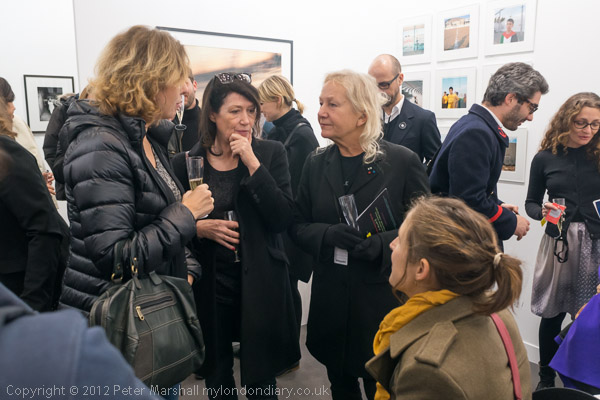
Although some of the gallery stalls were quite busy at the opening
This was the second year Paris Photo had been in its new premises at the Grand Palais, and in most respects this was a better venue than the old underground site in the bowels of the Louvre, handy though that was for cafes and shops – and for the very pleasant gardens of the Palais Royal. It was less crowded, got less overheated and I had no problems of claustrophobia – if anything it favoured the opposite. On the downside it seemed less intimate, and certainly I bumped into far fewer people I knew as I made my way round. But perhaps with there being far less representation of living photographers from the UK and central Europe in this year’s event fewer of those I know bothered to make the journey.
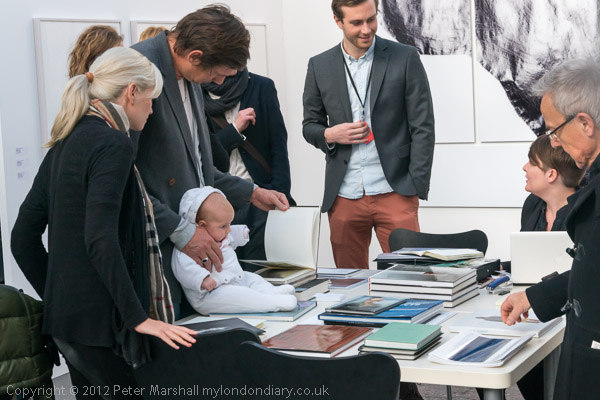
Starting young
I’ll write more about Paris Photo and a few of the things that excited me there and elsewhere in Paris in the coming days, and as a part of a ‘Paris Diary‘ that I’ll eventually put up on ‘My London Diary.’
________________________________________________________
My London Diary : Buildings of London : River Lea/Lee Valley : London’s Industrial Heritage
All photographs on this and my other sites, unless otherwise stated are by Peter Marshall and are available for reproduction or can be bought as prints.
To order prints or reproduce images
________________________________________________________